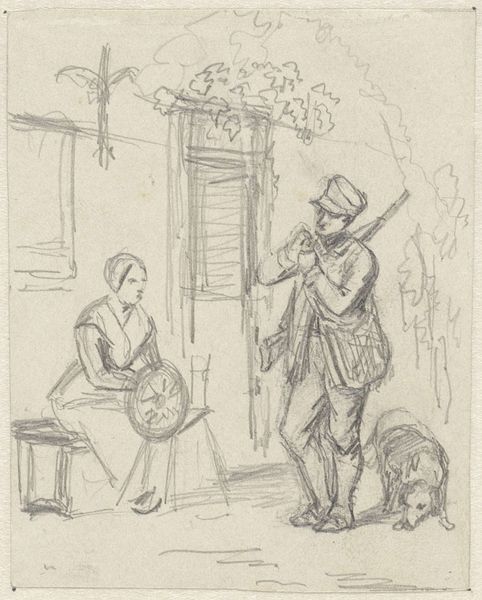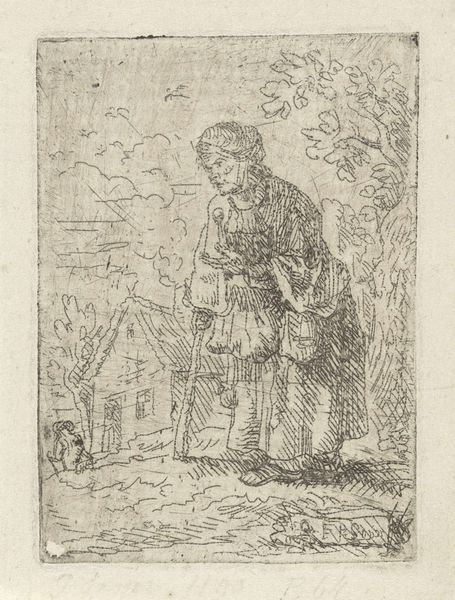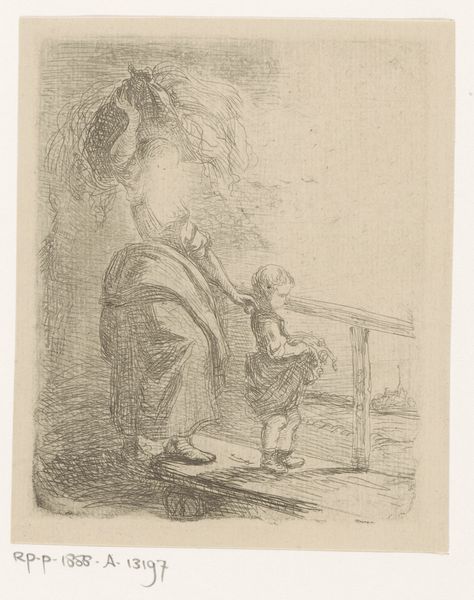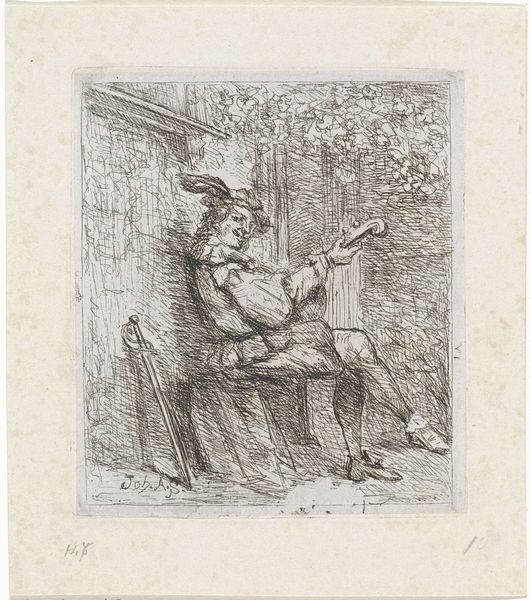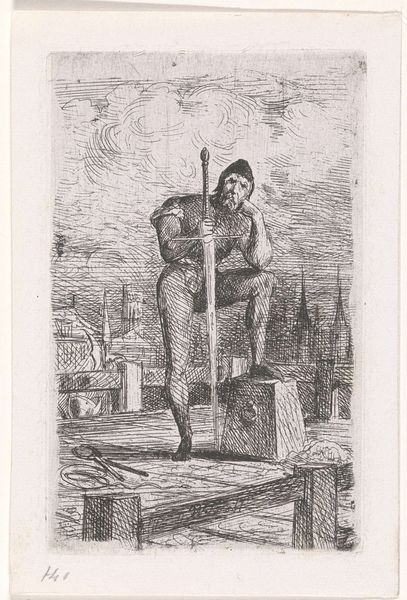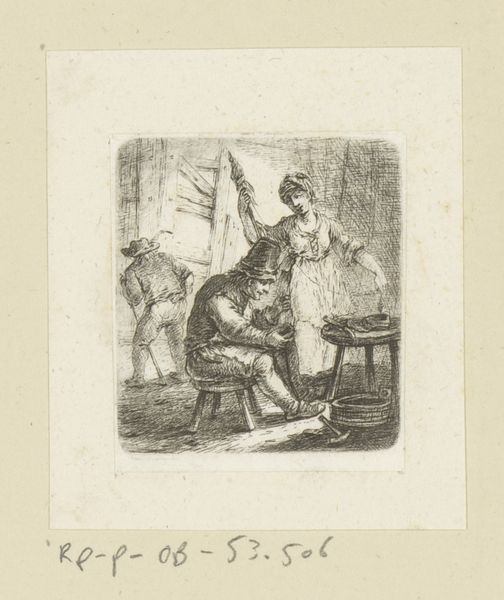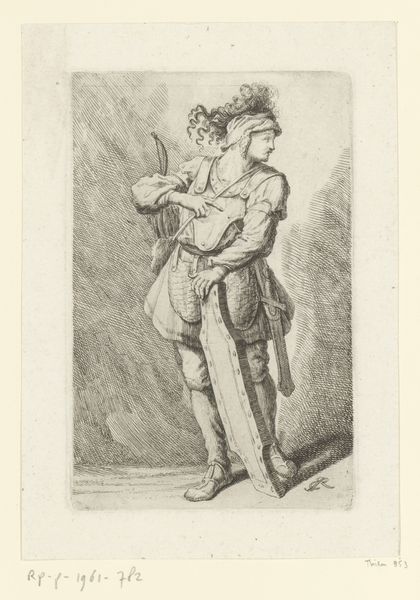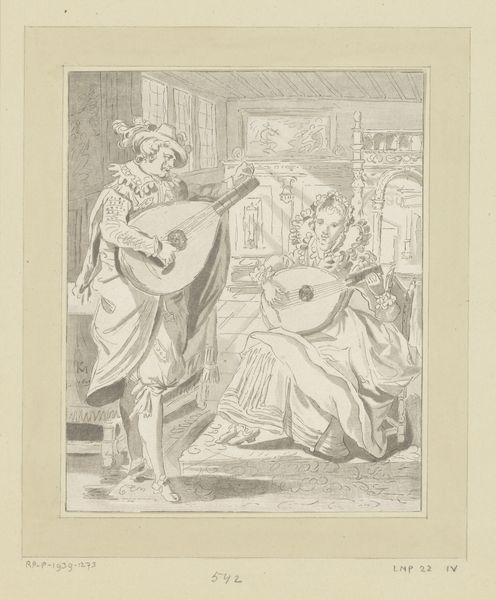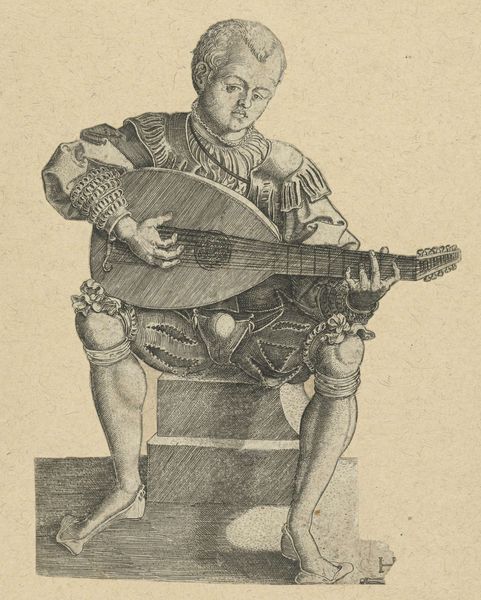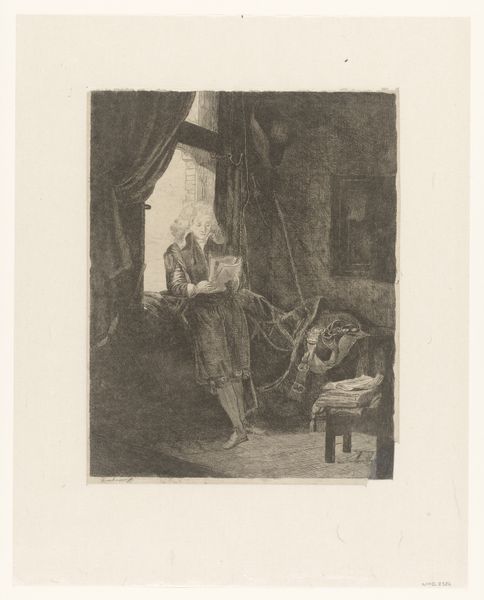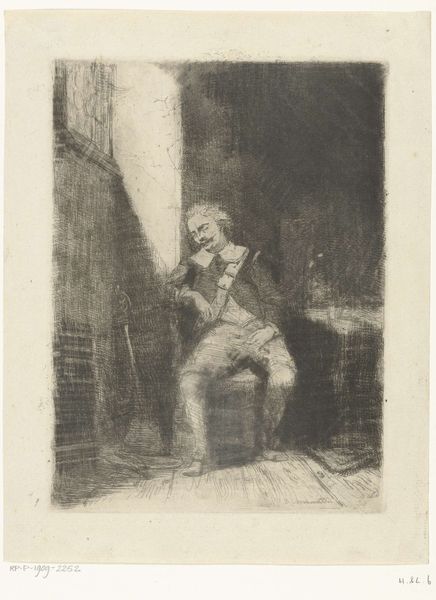
drawing, ink, pen
portrait
drawing
pen sketch
pencil sketch
figuration
ink
ink drawing experimentation
pen
pencil work
genre-painting
Dimensions: height 147 mm, width 128 mm
Copyright: Rijks Museum: Open Domain
Editor: This pen and ink drawing from sometime between 1830 and 1863 depicts a guitarist seated next to a barrel. There’s a roughness to it that feels almost… journalistic, like a quick sketch from life. What do you make of it? Curator: I’m interested in the conditions of its production. Note the readily available and inexpensive materials: pen, ink, paper. This points to accessibility. Art wasn't necessarily a rarefied activity. It suggests the democratization of image-making as bourgeois society became the consumer. How might the ease of production shape its themes? Editor: Well, it seems to portray an everyday scene – a musician relaxing. Was this artist particularly interested in depicting ordinary life? Curator: Perhaps. But look closer. Notice the armor. Is this romanticizing the soldier figure, blending the everyday with a symbol of labour, defence and state power? We must ask ourselves: how is Schultz using readily available material and the low ‘craft’ of ink drawing to produce art? Editor: So you're saying the cheapness of the medium makes a statement in itself, bringing focus on social conditions depicted in the drawing? Curator: Exactly! By using these common materials, and depicting a figure blending soldier class with music, the artist opens a window onto the world of production and its social reflections. Now, doesn’t that perspective give the work an added layer of meaning? Editor: Definitely. It’s no longer just a man with a guitar but says more about class and cultural forces. It makes me wonder about the intended audience and the relationship between art and labour. Thanks for the insight! Curator: My pleasure. Analyzing art through the lens of its material and means of production can reveal the hidden dynamics that shaped its creation and consumption.
Comments
No comments
Be the first to comment and join the conversation on the ultimate creative platform.
